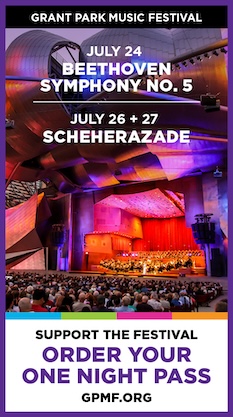Aimard’s mild-tempered Bach offers mixed rewards

“For the use and profit of the musical youth desirous of learning, as well as the pastime of those already skilled in this study.” So reads the title page of Bach’s massive, two book collection, The Well-Tempered Clavier. Unlike any other works of the master, these volumes have been in near constant circulation (to one degree or another) in homes and teaching studios since his death in 1750.
But like his Goldberg Variations, The Art of Fugue, and the unaccompanied works for violin and cello, the 48 Preludes and Fugues have found a permanent home in concert venues in the last century, giving pleasure to audiences who would otherwise have no interest in plumbing their didactic intent.
Until relatively recently, the music of Bach was only a small part of the public repertoire of the brilliant French pianist Pierre-Laurent Aimard, a consummate musician better known for his probing accounts of music by Ives, Carter, Liszt, and a sizable chunk of French literature, most notably Messiaen. His iron chops and unquenchable intellectual curiosity have served him well in premieres by many of today’s top drawer composers. In 2009 he signaled an expanded interest in Bach with the release of The Art of Fugue for Deutsche Grammophon, a disc that hit the top of the classical charts, as did his recording of the first book of The Well-Tempered Clavier this past summer. This later disc was preceded by a self-imposed yearlong sabbatical with the express intent of embarking on a leisurely submersion in the WTC.
If his fans have taken to these recordings with enthusiasm, critics have been less generous, many faulting him for an overly cautious restraint in color, dynamics, and rubato, as well as a predilection for tempos a bit more deliberate than many other interpreters. So it was fascinating to note at his recital of Book 1 at Orchestra Hall that he has allowed his interpretations to evolve and mature, even in the short time since his studio recording.
A case in point Sunday afternoon was the opening Prelude in C major, Bach’s most famous short keyboard work and well known even to those who abandoned their adolescent piano lessons after a few months. His recording is oddly flat and a bit plodding, unintentionally projecting a detached outlook that doesn’t bode well for the rest of the disc.
Aimard’s performance Sunday was even slower, completely eschewing the forward thrust that the perpetual motion preludes seem to suggest for most performers. But the compensating delights were plentiful, most notably his emphasis on the delicious dissonances that emerge and resolve in the middle and lower registers. He also de-emphasized the top voice nearly to the point of inaudibility, a strategy reprised from time to time in later pieces.
This initial dawdling tempo would have been more effective had the following fugue been sprightly in comparison, but the slack pacing was retained, perhaps as way of linking two movements that have no other musical connection. Fortunately there were other preludes in which he saw the value of motoric forward movement, notably those in C minor, D major, and G major. The more ruminative preludes in the recording seem flat and colorless, but his live readings suggested a reboot of his methodology. The C sharp minor Prelude was caressed into life with a broad color palette and subtle manipulation of tempo, and the G sharp minor prelude betrayed a heightened interest in Bach’s lyrical intentions.
The composer provided few indications of tempo, giving performers wide latitude and plenty of chances to get stuck in the weeds, especially in the fugues. Aimard seemed to equate complexity with patient execution, a valid angle in pieces like the B flat minor fugue where any pianist would be loathe to let any morsel slip by casually. But the A minor fugue turned sluggish after some promising opening bars. The pianist reveled in the eccentricities of the wonderfully weird A major fugue, etching the opening isolated pitch with a comic and brittle edge.
The Goldberg Variations (with a running time roughly half of Book 1 of the WTC), holds our attention because each of the 30 variations bare a clear relationship to the bass line, and the opening aria is reprised at the end. Not only is there no such common thread running through this set, but each prelude and fugue show little relationship to each other beyond the common key. The symmetry of the collection and the use of every possible key implies for some an intrinsic unity, when in fact the progression of keys is intended by Bach simply as a pedagogic tool. The 48 pieces in this collection are in essence autonomous movements, and hearing them in one stretch seems more an exercise in virtue than a dive into a pleasurable musical experience.
The final movement is the Fugue in B minor, a seven minute piece of extraordinary craftsmanship and invention that unfolded patiently and reverently in Aimard’s hands. It is also an incomprehensible and dreary piece for all but the few keyboard players and theorists who have subjected it to dissection. It is utterly unconvincing as a finale for a two and a half hour recital, no doubt because it was never intended as such by the composer. The pianist froze for what seemed like an eternity on the final chord, underlining the deadly seriousness of the enterprise for the audience, many of whom had nodded off by this point. As incomparably sublime as this music is, I don’t think I will be subjecting myself to another complete run-through anytime soon.
Posted in Performances
